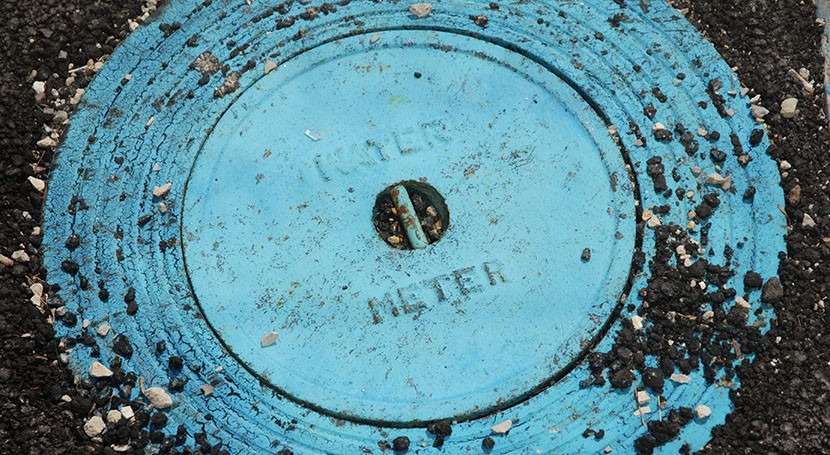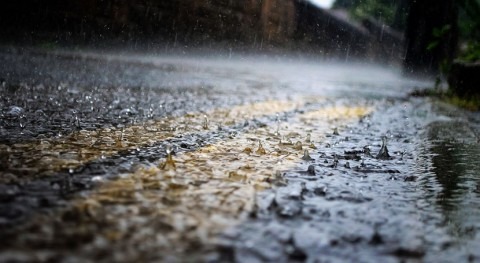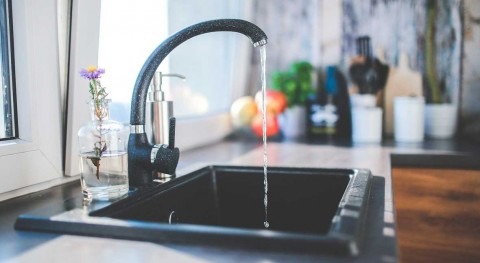Jackson, Mississippi isn’t alone in its need to urgently address low-income water affordability challenges. With barriers to clean water for American families thrust into the national spotlight in 2022, the National Association of Clean Water Agencies (NACWA) issued a new report, “The Growing U.S. Water Affordability Challenge and the Need for Federal Low-Income Water Customer Assistance Funding.” The NACWA report shows that rising income inequality is driving heightened affordability challenges for low-income households in every corner of the country, and that federal investments in water infrastructure – on the decline for decades – are currently insufficient to cover the rising cost of delivering water services. Increased federal investments would remove this burden from Americans living at or beneath the poverty level.
Three NACWA public utility members, representing the Jefferson County Commission (serving Birmingham, AL), Buffalo Sewer Authority, and Northeast Ohio Regional Sewer District (serving Cleveland, OH), hosted a national news conference on Wednesday, December 14, to release top-level findings from the new report. The report emphasizes the dwindling federal investment in clean water infrastructure each year, and the expanding cost-sharing ratio for low-income Americans in impoverished areas that are not limited to the Deep South.
David Denard, Director of Environmental Services at the Jefferson County Commission, Alabama, which provides wastewater services to the Birmingham, AL metropolitan area, said: “In Birmingham, we are very attuned to the circumstances underpinning the emergency next door in Mississippi. Jackson has a poverty rate more than two times the national average, but that’s not an anomaly. There are many communities in different regions across the U.S. with similar infrastructure vulnerabilities, as well as disproportionately high levels of poverty among ratepayers, who are footing the bill. Jackson is a harbinger of a wider national problem – the water affordability challenge – and what NACWA’s report tells us is that Congress must take this opportunity to address the wider national issue by providing targeted relief to low-income families.”
The report emphasizes the dwindling federal investment in clean water infrastructure each year
Oluwole 'OJ' McFoy, General Manager of Buffalo Sewer Authority, said: “Buffalo is a long way from Jackson in a completely different part of the country, but we face many of the same operational challenges. We just experienced a 1,000-year snowstorm that put strain on our system, and we also recognize our obligation to the local community to prioritize low-income water affordability. One-third of Buffalo’s 276,000 residents live below the poverty line. And with $500 million in lead service lines to replace and an additional $500 million in combined sewer overflow repairs, we face steep challenges. Our capital investment needs equate to roughly $3600 per person. What we need to do is restore a stronger federal responsibility for funding water infrastructure to ensure that we don’t put an impossible burden on the most vulnerable families in our community.”
Kyle Dreyfuss-Wells, CEO, Northeast Ohio Regional Sewer District, which serves Cleveland, OH and 61 surrounding communities, said: “Funding U.S. water infrastructure is at a crossroads and these decisions will affect utility customers in Northeast Ohio and nationwide. Over the past several decades the cost of providing clean water and drinking water services has risen, while federal dollars have almost disappeared. With growing regulatory mandates, increasingly complex water quality challenges related to nutrients and emerging contaminants, and the urgent need to build climate resilient water systems, these added costs will have a significant impact on low-income customers.”
Key findings of the NACWA Report include:
Federal investment in water infrastructure has decreased in recent decades, funding gaps remain.
- Currently, almost all federal funding for clean and drinking water infrastructure reaches communities through low-interest loan financing, repaid through customers’ water rates.
- In sum, adjusted for inflation, the federal cost-share of water utility capital investment has fallen from 62.77% in 1977 to less than 10% in recent years.
- As public utilities, the overwhelming majority of financing for capital investment projects and operation & maintenance activities comes from individual households through bill payments.
- Passage of the Infrastructure Investment and Jobs Act (IIJA) represents a strong step in the right direction in terms of the federal government reinvesting in water infrastructure. However, massive funding gaps between what was authorized and appropriated still exist, totaling roughly $4 billion per year over the five years covered by the legislation.
- Increasing income inequality is leading to heightened affordability challenges for low-income households.
As the federal share of water utility investment has declined, income inequality has skyrocketed.
- For the top one percent of Americans, household income has more than tripled since 1979. However, for 90 percent of families, income has just increased by roughly 1 percent per year over the past 40 years.
- The average annual wastewater service charge for a single-family household ($551) has risen at twice the rate of inflation as measured by the Consumer Price Index (CPI) between 2000 and 2021. This average charge of $551 represents 2.1% of the 2021 federal poverty income threshold for a family of four ($26,500), up from just 1.3% in 2000.
- As agencies continue to respond to emerging challenges and make up for paused rate increases during the worst of the pandemic’s economic impacts in 2020 and 2021, utility rates are projected to increase by approximately 4% per year from 2022 through 2026.
The NACWA report examined pathways for Congress to address these issues through low-income water customer assistance funding. Long-standing federal programs help American families to afford groceries and home energy bills, but there has never been a permanent program for water assistance. The Infrastructure Investment and Jobs Act (IIJA) authorized funding for a low-income assistance pilot program carried out by the Environmental Protection Agency (EPA), but no funding has been allocated.
NACWA’s experts from Alabama, New York, and Ohio took the opportunity to urge lawmakers in the new Congress to drill down on the water affordability challenge and allocate funding for low-income customer assistance in the Fiscal Year 2023 appropriations legislation, as well as in future annual spending bills.








